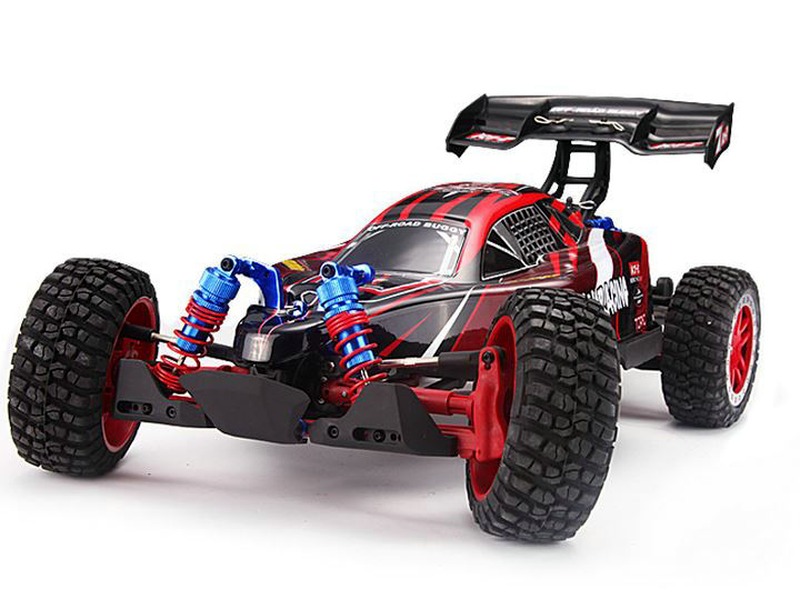How are RC cars controlled?

Remote-controlled (RC) cars are vehicles that are controlled by a user using a remote control device. The remote control device is typically a handheld transmitter that sends signals to a receiver on the car. The receiver then interprets the signals and translates them into commands that control the car’s movement.
RC cars are powered by either electric motors or internal combustion engines. Electric motors are powered by batteries and are typically used in smaller, lighter cars. Internal combustion engines are powered by fuel and are typically used in larger, heavier cars.
The remote control device used to control an RC car typically consists of a transmitter and a receiver. The transmitter is a handheld device that sends signals to the receiver on the car. The receiver then interprets the signals and translates them into commands that control the car’s movement.
The transmitter typically has two joysticks, one for controlling the car’s speed and direction, and one for controlling the car’s steering. The joysticks are usually connected to potentiometers, which are devices that measure the amount of force applied to the joystick. The potentiometers then send signals to the receiver, which interprets the signals and translates them into commands that control the car’s movement.
The transmitter also typically has buttons for controlling other features of the car, such as lights, sound effects, and other accessories. The buttons are usually connected to switches, which are devices that turn on or off when pressed. The switches then send signals to the receiver, which interprets the signals and translates them into commands that control the car’s features.
In addition to the transmitter and receiver, RC cars also typically have a speed control unit. The speed control unit is a device that regulates the speed of the car’s motor. The speed control unit is usually connected to a throttle, which is a device that controls the amount of power sent to the motor. The throttle is usually connected to a potentiometer, which measures the amount of force applied to the throttle. The potentiometer then sends signals to the speed control unit, which interprets the signals and translates them into commands that control the car’s speed.
In summary, RC cars are controlled by a user using a remote control device. The remote control device typically consists of a transmitter and a receiver. The transmitter has two joysticks for controlling the car’s speed and direction, and buttons for controlling other features of the car. The receiver interprets the signals from the transmitter and translates them into commands that control the car’s movement. The car also typically has a speed control unit, which is connected to a throttle and a potentiometer. The potentiometer sends signals to the speed control unit, which interprets the signals and translates them into commands that control the car’s speed.
Comments / Question
1. Always wear protective gear such as goggles and gloves when operating an RC car.
2. Make sure to operate the RC car in an open area away from people, pets, and other objects.
3. Make sure to read and follow the instructions provided with the RC car.
4. Make sure to check the battery and other components of the RC car before each use.
5. Make sure to keep the RC car away from water and other liquids.
6. Make sure to keep the RC car away from high temperatures.
7. Make sure to keep the RC car away from sharp objects.
8. Make sure to keep the RC car away from flammable materials.
9. Make sure to keep the RC car away from electrical outlets.
10. Make sure to keep the RC car away from children.

